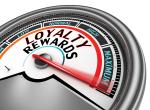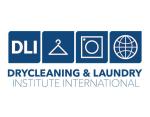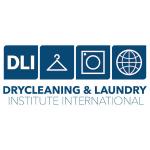CHICAGO — For many dry cleaners, marketing is a black box, holding its mysteries as to what works and what doesn’t, to the point where the business owner would rather avoid it entirely. By paying attention and tracking key data points, however, marketing can go from a necessary evil to the cleaner’s best business-building tool.
This was the overall theme of “Measure Your Marketing,” a webinar recently hosted by the Drycleaning & Laundry Institute (DLI) and let by David Coyle, industry marketing coach of Maverick Drycleaners and owner of In The Bag Cleaners in Wichita, Kansas. In Part 1 of this series, we examined some of the questions dry cleaners should ask themselves when it comes to their marketing, and in Part 2, we looked at the pieces and mindset that drive successful marketing efforts. In Part 3, we explored some of the areas where a dry cleaner can find his or her best customers, along with ways to keep them coming back. Today, we’ll conclude by diving into the key measurements that can let you know how your marketing efforts are performing.
Data Points to Consider
When measuring the effectiveness of your marketing, there are some key measurements to keep in mind:
Return on Investment (ROI) — “Again, when you do marketing, think about it as an investment, not as an expense that you're trying to cut,” Coyle says. To figure ROI, the formula is to take the gain from the investment, subtract the cost of the investment, and then divide that number again by the cost of the investment multiplied by 100 to get the ROI percentage. This number gives a solid, measurable data point by which you can gain a baseline and see how ads and marketing efforts are performing.
Cost Per Acquisition (CPA) — “These are the total costs to attract and acquire new clients,” Coyle says, “which are the first two steps in the customer’s journey. What you spend on attracting and acquiring goes into this for a period of time, divided by the number of new clients you've got. This gives you your cost per acquisition — what it costs you to acquire a new client.”
Customer Lifetime Value (CLV) — “This gives the total worth to your business of a customer over the whole period of their relationship with you,” Coyle says. “To calculate this, take the average number of visits per year multiplied by the average monetary value of each transaction multiplied by their years as a client.”
Doing this, Coyle believes, allows a cleaner to focus on the client relationships, as opposed to client transactions. “What's interesting is that, when you start focusing on the relationship and the things that make the lifetime value increase, your clients will actually start seeing you as a relationship rather than a transaction. A client will typically reciprocate how you treat them.”
Putting Marketing Data to Work
With this data in hand, a cleaner can focus on the services and marketing that resonate with their most valuable customers — usually, that works out to the 20% of customers that provide 80% of the profit.
This is only possible, however, if the cleaner keeps track of the data surrounding their marketing efforts and their customers’ behavior. And that can involve changing the mindset around marketing.
“Treat your marketing like an investment,” Coyle says. “If you can't measure it, get rid of it. That will be OK, because you'll have more money to put toward things that are measurable.”
For Part 1 of this series, click HERE. For Part 2, click HERE. For Part 3, click HERE.
Have a question or comment? E-mail our editor Dave Davis at [email protected].












































































































